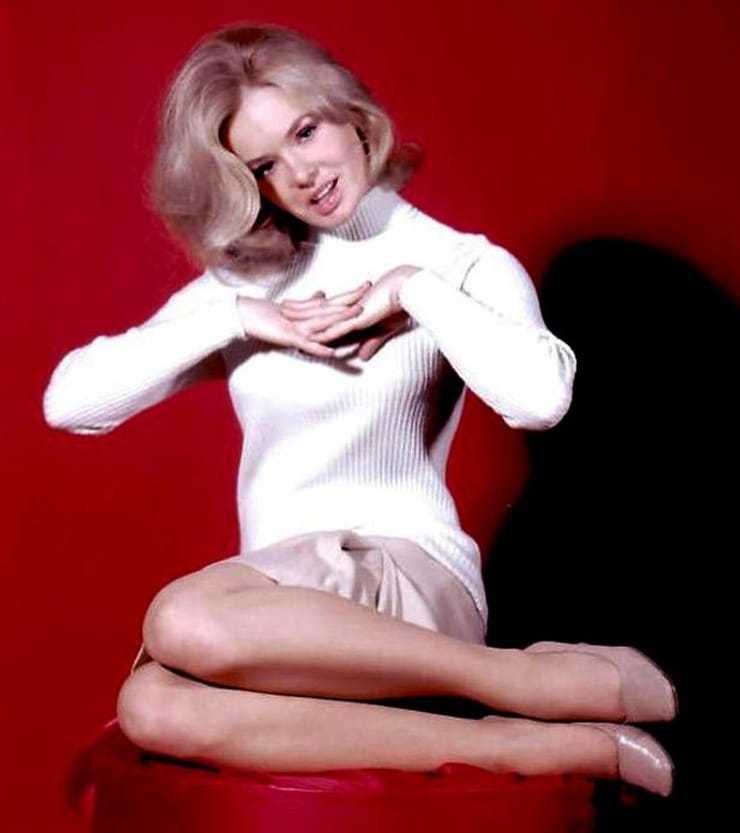Davenie Johanna Heatherton, better known to audiences as Joey Heatherton, was one of the brightest sparks of the golden age of television. With her wide eyes, vivacious personality, and magnetic energy, she commanded attention in an era when screens were smaller, but stars shone larger than life. Actress, dancer, singer — she wore many hats with effortless glamour. Yet, as the years passed, her dazzling presence on the screen seemed to fade. The question lingers: where did Joey Heatherton go?
Born in Rockville Centre, New York, in 1944, Heatherton was practically destined for a career in entertainment. She was the daughter of Ray Heatherton, a former Broadway star and radio host, which meant that music, performance, and show business were constants in her early life. Encouraged by her family’s showbiz roots, Joey quickly gravitated toward the stage. She studied ballet, trained in modern dance, and refined her vocal skills — tools that would later make her an all-around performer perfectly suited for television variety shows that thrived in the 1960s and 1970s.
Her television debut came when she was still a teenager, appearing on children’s programming and early variety specials. It wasn’t long before casting directors noticed her striking looks and natural charisma. With her blend of girl-next-door charm and sophisticated allure, Heatherton was the type of performer America couldn’t look away from.

The 1960s became her playground. Heatherton appeared in a string of television shows, from guest spots on The Twilight Zone and Route 66 to recurring gigs on popular variety hours. But her real breakthrough came when she joined
Hullabaloo, NBC’s groundbreaking primetime music and dance show. There, Heatherton quickly became known for her electrifying dance routines, modern moves, and chic style. At a time when television was still experimenting with how to present youth culture, Joey represented the bridge between mainstream audiences and the rising energy of the 1960s.
Beyond television, Heatherton also carved out a career in music. She recorded albums and singles that highlighted her sultry voice, with songs like Gone and her cover of I’ll Be Seeing You
. Though she never reached the same recording heights as contemporaries like Nancy Sinatra or Cher, her music became a showcase of her versatility. Joey Heatherton wasn’t content to be only one thing — she wanted to sing, dance, act, and captivate.

Her film career added another dimension. She starred opposite Richard Burton and Elizabeth Taylor in The Sandpiper (1965), and appeared in titles such as Where Love Has Gone and Bluebeard
. On the big screen, Heatherton brought the same allure that made her a television favorite. She embodied the modern woman of the 1960s and 70s — independent, glamorous, and unapologetically sensual.
One of the defining chapters of her career came from her work with the USO (United Service Organizations). Like Bob Hope, Heatherton became a staple of tours entertaining American troops overseas during the Vietnam War. Her performances — lively, flirtatious, and heartfelt — earned her the admiration of servicemen far from home. In many ways, Joey Heatherton became not just an entertainer, but a symbol of American glamour and spirit abroad.

Yet, as quickly as her star rose, the momentum began to slow. The late 1970s and 1980s brought challenges, including shifts in the entertainment industry, personal struggles, and the difficulty of maintaining fame in an ever-changing cultural landscape. Heatherton found herself less frequently on television and film, replaced by new faces and a new generation of stars.
Still, her legacy lingers. For those who watched her light up screens during the golden age, Joey Heatherton represents a particular moment in entertainment history — when variety shows reigned supreme, when music and dance blended seamlessly with comedy and acting, and when the boundaries of television stardom were being rewritten. She was never just a supporting act; she was a centerpiece, a performer who could do it all.

In reflecting on Joey Heatherton’s career, one realizes that her story is not just about fame but about transformation. She embodied an era and then quietly stepped away, leaving behind memories of her charm and talent. Today, fans still ask where she went, but perhaps the more important question is: do we truly appreciate what she gave us when she was at her peak?
Davenie Johanna Heatherton may not dominate headlines anymore, but her work remains a fascinating reminder of the variety-driven, glamorous, and sometimes unpredictable world of mid-20th-century American entertainment. Her dances, her songs, and her striking presence on stage are forever etched into the collective memory of those who tuned in to watch television’s golden era unfold.

She may have walked away from the spotlight, but her glow — the glow of Joey Heatherton — continues to linger.


